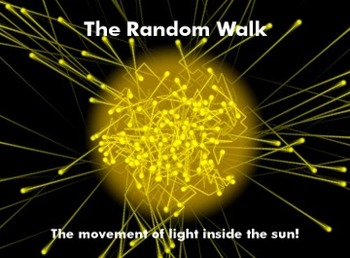Astronomy/Earth Science Lab Activity - The Random Walk of Photons in a Star.
No More Boring Science
1k Followers
Grade Levels
7th - 12th, Higher Education, Adult Education, Homeschool
Subjects
Resource Type
Formats Included
- PDF
Pages
6 pages
No More Boring Science
1k Followers
Description
New from No More Boring Science - The core of the sun is a ball of superheated plasma that produces millions of watts of energy. Some of this energy is in the form of light. But, that light just doesn't stream to the surface, flying across space to shine down on us. No, things are more fascinating and complicated. It takes, on average, 16 million years for a photon of light to escape the sun and shine on us. Why? The Random Walk.
This lab helps model the random motion of photons of light as they bounce back and forth in the radiative zone of the sun. This lab allows students to see exactly how this random motion works, and makes them plot just how random the motion can be. Included extensions also quantify the activity, allowing this lab to scale from middle school science all the way into college astronomy.
If you like the activity, be sure to rate it!
This is part of a series of activites on Science in the Sky from No More Boring Science.
This work is licensed under a Creative Commons Attribution-NoDerivs 3.0 Unported License.
This lab helps model the random motion of photons of light as they bounce back and forth in the radiative zone of the sun. This lab allows students to see exactly how this random motion works, and makes them plot just how random the motion can be. Included extensions also quantify the activity, allowing this lab to scale from middle school science all the way into college astronomy.
If you like the activity, be sure to rate it!
This is part of a series of activites on Science in the Sky from No More Boring Science.
This work is licensed under a Creative Commons Attribution-NoDerivs 3.0 Unported License.
Total Pages
6 pages
Answer Key
Included
Teaching Duration
90 minutes
Last updated Apr 2nd, 2014
Report this resource to TPT
Reported resources will be reviewed by our team. Report this resource to let us know if this resource violates TPT’s content guidelines.





